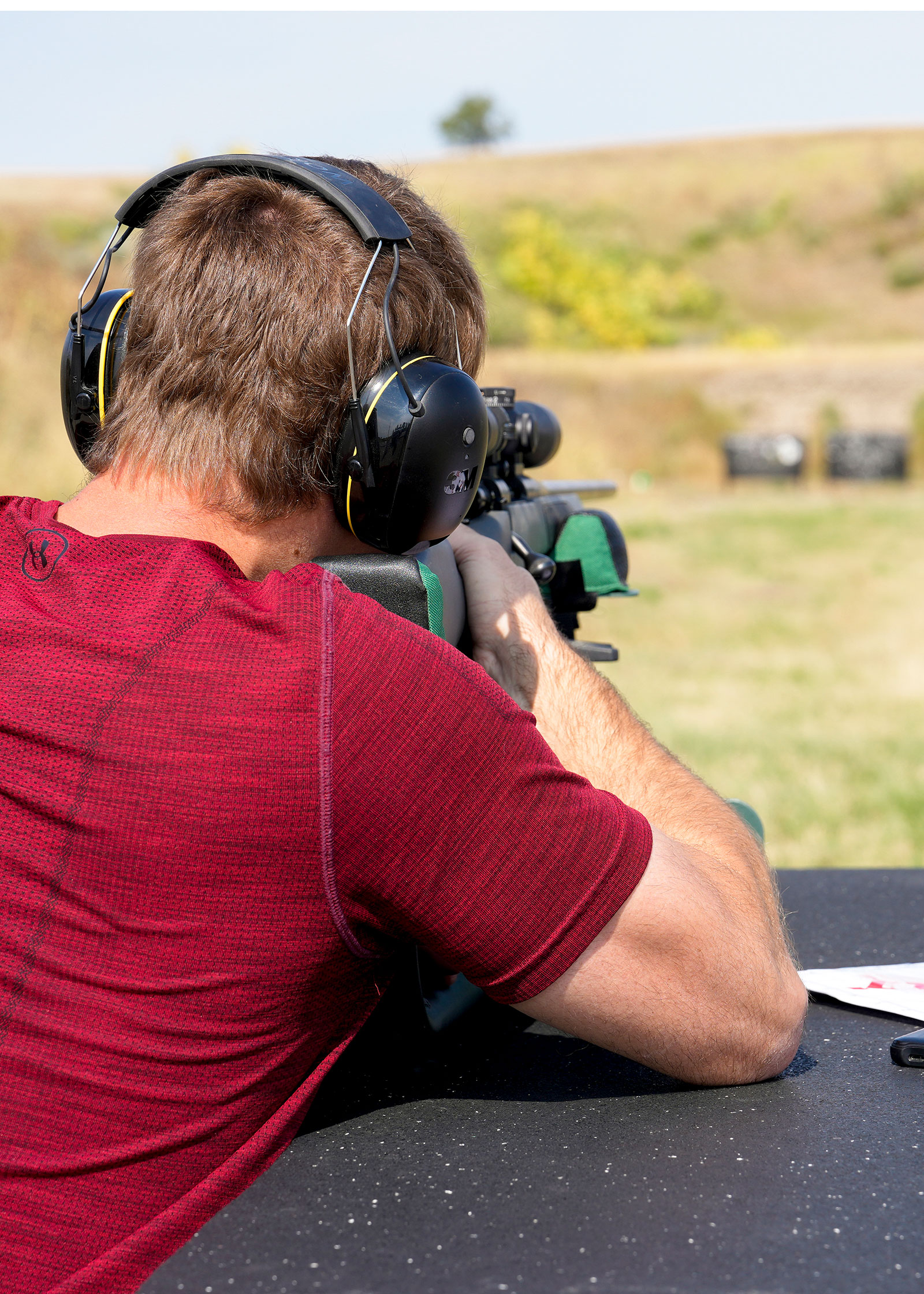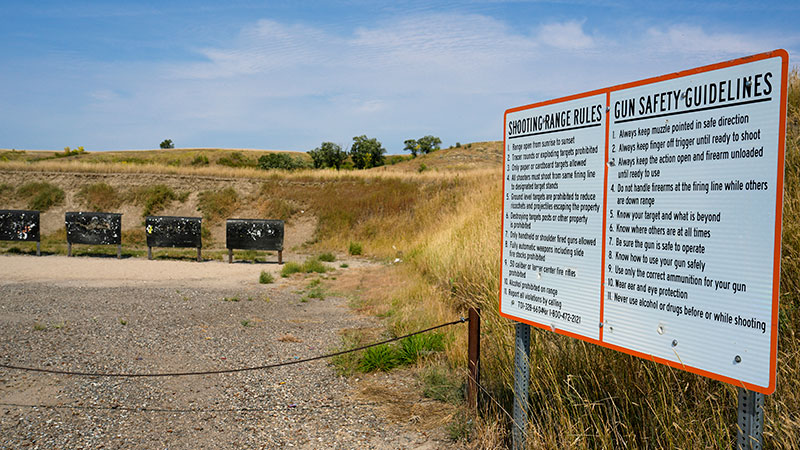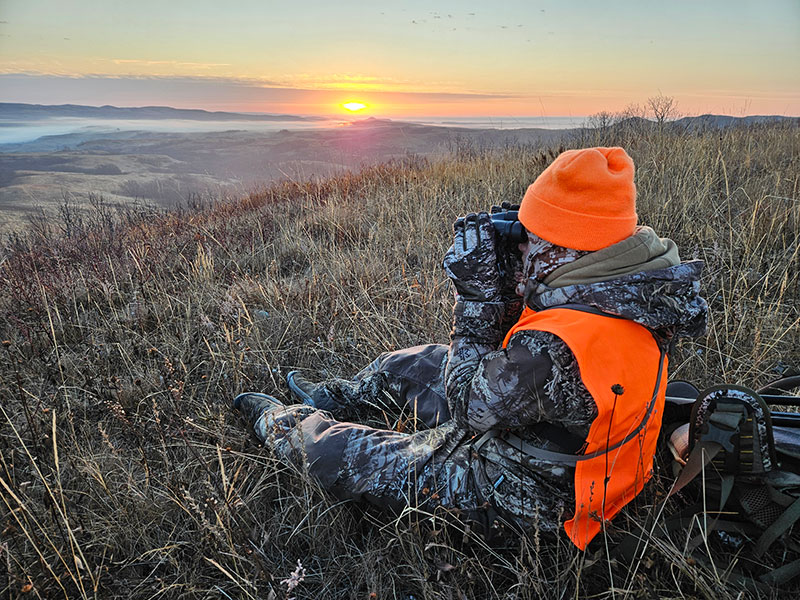Safety First
Ron Wilson

The hunt begins at the gun range.
“I would never go on a hunt without checking the zero of my rifle and I would suggest that other hunters do the same,” said Marty Egeland, North Dakota Game and Fish Department education supervisor. “Even if you’re proficient with your firearm, the practice itself is a good thing because it’s been sitting in a gun cabinet for a year. You owe it to the animal to make sure that the bullet is going to hit where you intend it to.”
While it’s illegal to sight in your rifle for, say, the upcoming deer season on Private Land Open To Sportsmen tracts, or at Department wildlife management areas, other than those areas on WMAs designated for such activities, Egeland said there are many safe places around the state to shoot.
The Game and Fish Department, for instance, manages five gun ranges on wildlife management areas in the state, and also partners with many local clubs around North Dakota to offer many other public shooting facilities.
The gun ranges managed by the Game and Fish Department are Lewis and Clark WMA, located 6 miles southwest of Williston; Little Heart (Schmidt) Bottoms, located 12 miles south of Mandan off ND Highway 1806; MacLean Bottoms, located 2 miles south of ND Highway 1804, about 15 miles southeast of Bismarck; Riverdale WMA, located 2 miles southwest of Riverdale; and Wilton Mine WMA, located 2 miles east of Wilton.
The Department may periodically close these ranges for routine maintenance and improvements. The status of each range can be found on the Department’s website at gf.nd.gov. The website also provides a detailed listing of other shooting facilities in North Dakota.
For this story, Egeland was interviewed on a random weekday afternoon in mid-September at MacLean Bottoms and two of the shooting lanes were in use.
“You cannot come out here and not find someone here. I don’t know if I’ve ever driven by here and found the place empty,” he said. “In fact, when I’m prepping for going out on a hunt and I want to shoot my rifle, I usually get out here at first light just to avoid the crowds and I have never been the first one here. They get high use. There’s high demand for this.”

Most of the shooting ranges around the state are local ranges, owned and operated by wildlife clubs and shooting groups, which helps fill the need, Egeland said. Even so, there are always places where there are voids for a number of reasons.
“There are big chunks of areas where we don’t have a lot of public access, particularly close to large urban centers. You get in the Red River Valley, for instance, we just don’t manage a lot of land like we do near Bismarck,” he said. “And it’s hard to find a location to compete with commercial or agricultural interests or the fact that there’s little subdivisions all over the place to have a safe place to put a gun range.”
Nevertheless, a new shooting range is opening in the eastern side of the state sometime this fall west of Hankinson.

